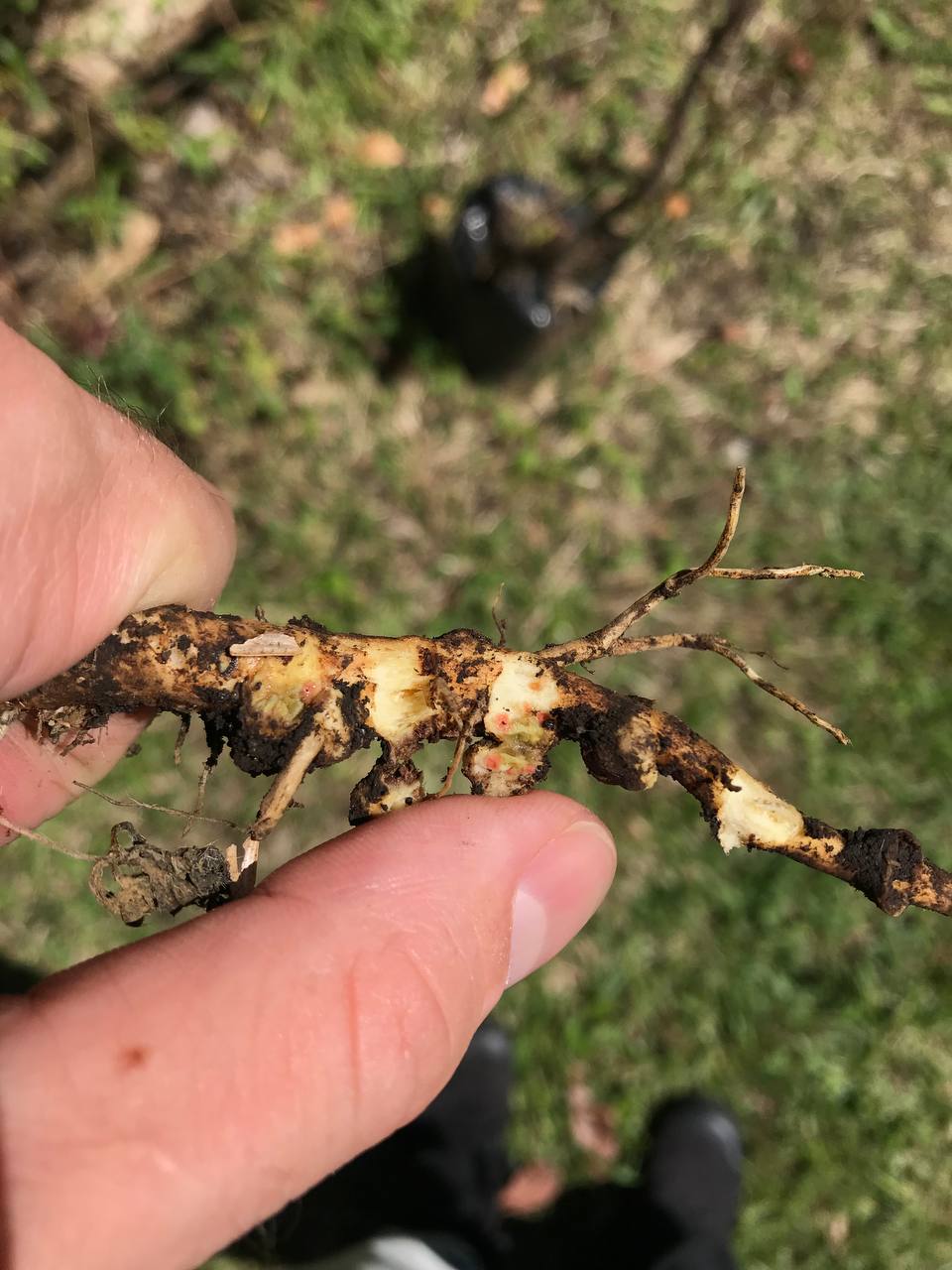Blood, nitrogen and the Great Oxidation Event
Nodules are red, violates are blue
I was today years old when I learned why the nitrogen fixing nodules on the roots of legumes tend to be red when you open them. It has to do with the Great Oxidation Event, which happened around 2.5 billion years ago, and is directly connected to the reason why our blood is red.
(This article also exists in Spanish: link)
Nitrogen is naturally scarce. It might make up the bulk of what we call "air", but this nitrogen exists as N2, and most organisms have no clue what to do with that. "Most organisms", because there are a few bacteria that have evolved the capacity to capture nitrogen from the atmosphere, and turn it into molecules that are biologically useful, like NH3.
Some plants, most of them part of the family of "legumes",1 have evolved to strike a symbiotic bargain with these bacteria: the bacteria get to live in nodules on the roots and get a steady supply of sugars from the plant, and in return the bacteria capture nitrogen from the atmosphere, and share it with the plant.
Andrés, from La Escuela Agroecológica la Aurora, recently showed me that these nodules are red, or at least turn red when you open them (see image below). That alone already excited me. Because it looks pretty. But reading the book "Elemental" by Stephen Porder (2023), I learned why they turn red like that. And that excited me even more.

Blood and soil
First, we need to make a small detour, and briefly consider why our blood is red. It all has to do with oxygen. Much like soils turn red when the iron within it oxidizes (combines with oxygen), our blood turns red because the iron of the hemoglobine in our blood combines with the oxygen that our lungs provide. In fact, our blood is the reddest when it just leaves our lungs, and turns darker as it passes through our body, and delivers the oxygen to where it is needed.
The mixed success of the Great Oxidation Event
Ok, back to nitrogen. Before the bacteria evolved the ability to capture nitrogen from the sky, Earth's atmosphere barely contained any oxygen. It was only when these bacteria (cyanobacteria) started capturing nitrogen, about 2.5 billion years ago, that photosynthesizing (oxygen producing) life in the ocean started to receive the steady supply of the nitrogen that it needed to truly thrive, and - in the process - fill the atmospere with oxygen. And fill the atmosphere with oxygen they did. We call this transition, the Great Oxidation Event.
The problem however, is that oxygen messes with the nitrogen-capturing process. When the bacteria evolved their nitrogen-capturing capacity, this was no problem, since there was barely any oxygen in the atmosphere. But, largely because of their own success, the atmosphere was now full of oxygen. Good for us, bad for the cyanobacteria.
Interestingly enough, nature never managed to properly, fundamentally solve this problem: the nitrogen-capturing process that evolved in a world without oxygen, is still the main (natural) nitrogen-capturing process we have, despite the fact that the environment is drastically changed. Instead nature came up with ad-hoc solutions.
The ad-hoc solution of legumes
Back to the legumes and their nodules. To recap:
- The nitrogen fixating bacteria living in these nodules still use the process that their ancestors developed in a world without oxygen.
- This process basically breaks down in the presence of oxygen.
- Our current atmosphere contains a lot of oxygen.
The ad-hoc solution that the legumes came up with, is to fill/cover the nodules with a protein called leghemoglobine. Leghemoglobin is very similar to hemaglobine, in the sense that …
- … its iron strongly binds with oxygen
- … it turns red in the process.
So by filling the nodules with oxygen-catching leghemoglobin, the legumes protect the nitrogen-fixating bacteria from that the destructive force of oxygen.
Unfortunately for the legumes, the leghemoglobin does not protect the nodule from the destructive force of humans. So you can take the root out of the soil and open the nodules with your nails.
And if you do, you are basically looking at the bloody defense mechanism of a world that existed 2.5 billion years ago. Which I think is beautiful.
Footnotes:
For example soy beans.